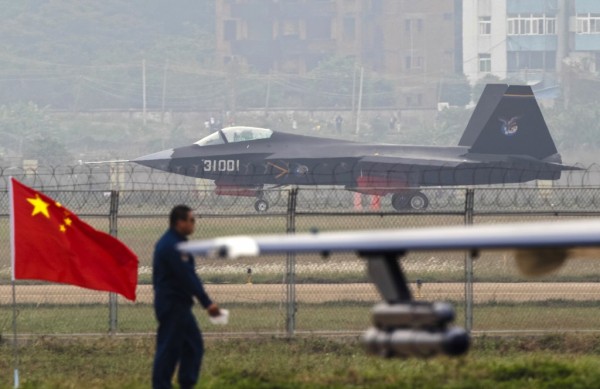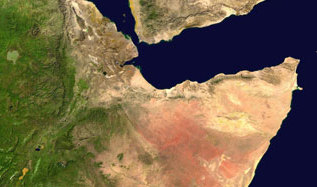PBS: Escaping Eritrea … [Read More...] about ካብ ውሽጢ ቤት ማእሰርታት ኤርትራ
Why China is far from ready to meet the U.S. on a global battlefront
By David Axe, 22 June 2015, Reuters
Both of these statements are true:
1) China possesses a rapidly improving military that, in certain local or regional engagements, could match — and even defeat — U.S. forces in battle.
2) In military terms, China is a paper dragon that, despite its apparent strength, is powerless to intervene in world events far from its shores.
Seeing the distinction between these two ideas is the key to understanding China’s strategic aims, its military means and the threat, if any, that the country poses to its neighbors, the United States and the existing world order.

Beijing’s goals include “securing China’s status as a great power and, ultimately, reacquiring regional preeminence,” according to the 2015 edition of the U.S. Defense Department’s annual report on Chinese military power. China is not a global military power. In fact, right now it doesn’t even want to be one.
But that doesn’t mean the world’s most populous country doesn’t pose a threat to the planet’s wealthiest and most powerful one. Yes, the United States and China are at odds, mostly as a result of China’s expanding definition of what comprises its territory in the western Pacific, and how that expansion threatens U.S. allies and the postwar economic order Washington was instrumental in creating.
China, however, still could not meet and match the U.S. military on a global battlefront. Beijing lacks the expertise, military doctrine and equipment to do so. The Chinese military has no recent combat experience and, as a consequence, its training regimens are unrealistic.
Beijing’s army, navy and air force may be flush with new equipment, but much of it is based on designs that Chinese government hackers and agents stole from the United States and other countries. Most of it has never been exposed to the rigors of actual combat, so it’s unclear how well it would actually work.
But that might not matter. China has no interest in deploying and fighting across the globe, as the United States does. Beijing is preparing to fight along its own borders and especially in the China seas, a far easier task for its inexperienced troops.
Because, with all its military handicaps, in its own region China could be capable of beating U.S. forces in battle. The critical question is just how much the Pentagon should care.
Active defense
The brutal Japanese invasion and occupation of China during the 1930s and 1940s had a profound effect on modern China’s development. Prior to the mid-1980s, China’s military strategy was focused on one great fear — another invasion, in this case an overland attack by the Soviet Union. Commensurate with the threat, Beijing’s military organization emphasized short-range, defensive ground forces. In essence, a Great Wall of men and metal.
The danger from the Soviet Union ebbed and, in 1985, the Chinese Communist Party revised its war strategy. The “active defense” doctrine sought to move the fighting away from the Chinese heartland. It shifted attention from China’s western land border to its eastern sea frontier — including Taiwan, which in the eyes of Beijing’s ruling Communist Party is a breakaway province.

But the new strategy was still largely defensive. “We attack only after being attacked,” the Chinese navy asserted in its contribution to the official active-defense doctrine. It’s worth noting that, in the party’s view, a formal announcement of full independence by Taiwan would be an “attack” on China’s integrity, justifying a retaliatory attack on the island nation.
Thirty years later, Beijing is still pursuing its offshore defense, if at a greater distance. It now encompasses island territory that China dared not actively claim until recently. Still, the strategy remains the same.
Which is why, for all the hundreds of billions of dollars Beijing has spent on its armed forces since the Chinese economy really took off in the late 1990s and 2000s — and even taking into account equipment optimized for an amphibious assault on Taiwan — Beijing still acquires mostly short-range, defensive weaponry.Which is how China can possess the world’s second-biggest fleet of jet fighters after the United States — 1,500 jets versus Washington’s 2,800 — but only a mere handful of the aerial tankers that refuel fighters in mid-air, allowing them to fight battles far from their bases.
The U.S. Air Force, Navy and Marine Corps together operate more than 500 tankers. Because America fights all over the world.
Similarly, China’s navy is huge. With some 300 warships, it is second in strength only to the 500 vessels in service with the U.S. Navy and Military Sealift Command, which operates America’s transport and spy ships. But the Chinese navy, like its air force, is a short-range force. Beijing’s fleet includes just six logistics ships capable of refueling and resupplying other ships at sea, extending their sailing range.
America’s fleet includes more than 30 such vessels.
The upshot of Beijing’s emphasis on short-range forces is that the farther its troops fight from the Chinese mainland, the less effective they will be. It doesn’t help that Beijing has few close allies, which means virtually no overseas bases it can count on during conflicts. The Pentagon, by contrast, maintains many hundreds of overseas facilities.
Chinese forces simply cannot cross the ocean to confront the U.S. military in America’s own backyard. Nor does Beijing even want to do so. Meanwhile, U.S. forces routinely patrol within miles of China’s airspace and national waters, and Washington has taken it on itself to be the decisive if not dominant military power on every continent.
In the western Pacific, however, China does threaten U.S. military standing. The flipside of possessing a defensive, short-range navy and air force is that Beijing can quickly concentrate numerous forces across a relatively small geographic area. The large numbers help China compensate for the overall poor quality of its forces.
By contrast, the United States — because it must project forces over great distances and usually is in the process of doing so all around the world — can usually deploy only a small number of ships and planes to any particular place at any given time. Because they would be badly outnumbered, it might not matter that U.S. ships and planes are generally superior to their Chinese counterparts in a one-on-one fight.
n a landmark analysis in 2008, the RAND Corporation, a California think tank, concluded that China would have a huge numerical advantage over the United States in any aerial battle near Taiwan. The size of the advantage would depend on whether U.S. forces staged from Kadena Air Base in Japan or Andersen Air Force Base in Guam. “China could enjoy a 3:1 edge in fighters if we can fly from Kadena,” the analysis warned, “about 10:1 if forced to operate from Andersen.” The report goes on to note that while American warplanes are generally technologically superior to their Chinese counterparts, they’re not 10 times superior.
Second island chain
But if China’s strategy is defensive, this argument goes, then the United States would only risk defeat in battle with the Chinese if Washington attacked first. And America wouldn’t ever attack China, right?
The depends on the definition of “attack.” Assault the Chinese mainland? Most certainly not. But the United States and most other countries equate an attack on their interests with an attack on their soil. And increasingly, China is expanding the definition of its interests and the extent of its soil.

For one, if Taiwan ever formally announced its independence — and make no mistake, Taiwan is already fully independent — China vows it would invade. Because the integrity of historical China, including the island of Formosa that became Taiwan in 1949, is firmly within China’s current definition of its core interests.
China also claims islands in the East and South China seas that Taiwan, Vietnam, Japan, Malaysia, the Philippines and Brunei are claiming. The islands themselves are essentially beside the point; it’s the waters around them, and the oil and natural gas below that the countries are so eager to secure for themselves.
Though those disputes are not new, as China’s economy and military have developed, its claims have grown more assertive. In late 2014, China greatly escalated these territorial disputes when it began dredging isolated reefs in contested waters, piling sand into artificial islands, atop which it built piers, airstrips and other military facilities, transforming the islands into outposts.
The outposts make it increasingly unlikely the claimant countries will find easy, peaceful solutions to their conflicts.
The United States maintains military alliances with Japan, the Philippines, Taiwan and, to a lesser extent, Vietnam. Washington is also committed to maintaining freedom of navigation for commercial ships in international waters — a key factor of global free trade. If any of the above countries goes to war with China, the United States could get drawn in, too. And on China’s turf, where Beijing’s short-range forces are most useful.
Fighting in its own region, China is a military power to be reckoned with. Fighting far from home against U.S. troops, the Chinese would be hopelessly outmatched, assuming they could even reach the battlefield.
The trick for the United States is to avoid going to war with China on China’s terms without also surrendering the western Pacific to Chinese control. That means talk — backed up by the threat of force. “The United States seeks to develop a constructive relationship with China,” the Pentagon states in its China report, “that promotes security and prosperity in Asia and around the world.”
The report continues: “At the same time, the strategy acknowledges there will be areas of competition, and underscores that the United States will manage this competition with China from a position of strength.”
But there’s a bluff in this approach. In the only region where China’s actions pose a serious threat to U.S. interests, Washington struggles to maintain a position of strength. Beijing has carefully matched clear and restrained strategic goals with more than adequate military means.
That’s a powerful combination.
